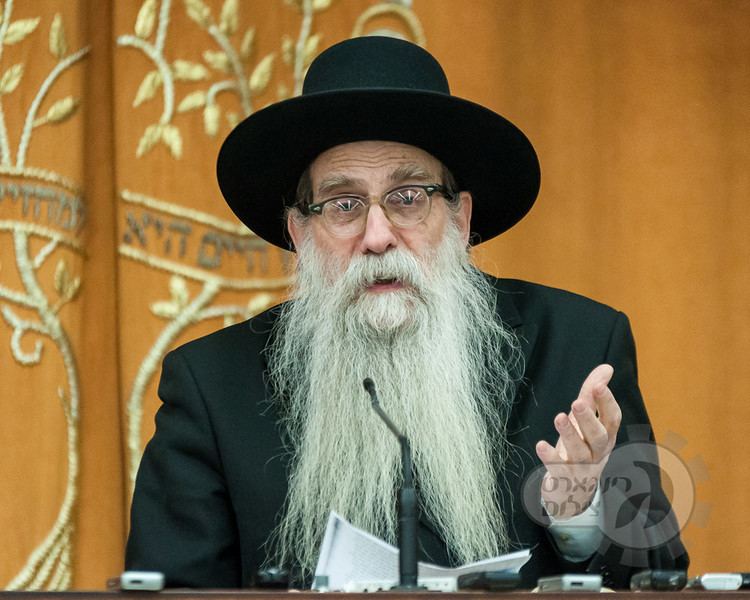By Rabbi Yair Hoffman
Yes, it is true. And Rav Yisroel Salanter said it. Our growth on Tisha B’Av according to Moreinu HaRav Yeruchem Olshin, can equal that of our growth on Yom Kippur itself. All this and much much more is found in Rav Olshin’s Sefer, Yare’ach LaMoadim on the Three Weeks,
Rav Olshin shlita, is one of the four Roshei Yeshiva of Beis Midrash Gavoah in Lakewood and his seforim enjoy soaring popularity. This is probably because not only does it introduce you to aspects of Torah and the yomim tovim that you were not even aware of previously, but it gives you a deep and thorough understanding of these aspects. For example, who ever heard of “HeAnek Dom” as it applies to Aveilus versus “Mesamchei Laiv?” One ends up thinking, “How can I ever have been without this sefer?”
Following its predecessors, the Sefer is divided into two sections: halachic/Talmudic sugyas and machshava and ruchniyus. In this kuntrus there are eight halachic topics and eleven machshava and ruchniyus topics.
THE FIRST SECTION
The first topic in section one deals with the Rambam’s statement that all of the 4 fasts deal with Teshuva, and the Chasam Sofer’s question on why the Rambam did not say that they were enacted for mourning and to feel the tzaar. The second topic deals with the gemorah in Megillah 5a that Rebbe Yehudah wished to undo Tisha B’Av [or some aspects of it] and that there are two elements to Tisha b’av that of fasting and the additional element of mourning. The third deals with Rebbe Yehudah again, but the possibility that he wished to switch it to the 10th of Av. The fourth deals with the uniqueness of the fact that the prohibition of eating and drinking (a Yom Kippur concept) is on account of the mourning – even though these prohibitions don’t exist in mourning. The fifth deals with the different nature of regular Aveilus and that of Tisha B’Av and how they differ in the prohibition of Talmud Torah. The sixth discusses whether we are obligated in learning the Torah that is permitted on Tisha B’Av (sad parts and halachos). Rav Olshin introduces us to the idea that the obligation of learning Torah is to learn in b’simcha. The seventh discusses the nature of a pushed off Tisha B’Av – a nidcheh. The eighth discusses a kotton who became bar mitzvahed on a nidcheh
THE SECOND SECTION
The second section, as in all of Yare’ach LaMoadim seforim, deals with machshava, hashkafa and matters of Yiras Shamayim. The first topic deals with Rabbi Eliezer HaKalir’s words in his Kinnah (#24) I shall eulogize each year a new eulogy. Rav Olshin correlates it to a Midrash in Eicha about Rabban Gamliel having heard a woman in his neighborhood crying over her son and being inspired to mourn the Beis HaMikdash in the same manner. He did so to such a degree that his students had to move him out of his neighborhood! The second maamar states how it is possible that our growth on Tisha B’Av can equal our growth on Yom Kippur. The third discusses how the main mourning lies in the emotion one musters about the loss of the Mikdash.
The fourth maamar discusses the power and zchus of Torah and how it could have saved us – notwithstanding our falling in the three cardinal aveiros. Toward the end, the maamar discusses how immersion in Torah and Chessed can save us from the birthbangs of mashiach. The fifth maamar discusses the differences between the first Beis HaMikdash and the second which was lost on account of Sinas Chinam. Rav Olshin explains that even the zchus of Torah could not help when there is sinas chinam. The sixth maamar further elaborates upon the causes of the destruction of the second Beis HaMikdash, and explains that the merit of Torah only protects when we genuinely value Torah.
The seventh maamar is about v’havi’ainu l’tzion ircha and that our very existence in Eretz Yisroel is dependent upon our involvement in Torah. The eighth maamar discusses how Shabbos Nachamu is when Hashem Himself consoles us and that the essence of galus is our disconnection from Hashem. The ninth maamar deals with the 7 haftorahs from Tisha B’Av until Rosh haShana called shevah d’nechamta – the haftorahs of consolation. But why do the haftoros not deal with Teshuvah – being that we need to prepare for Rosh HaShana? Rav Olshin answers that the consolation in realizing Hashem’s absolute love for Klal Yisroel brings us to Teshuvah.
The tenth maamar deals with Tu B’Av and the obligation of learning Torah at night and of teaching this obligation to one’s children. The eleventh Maamar deals with the minhag of having a special seudah on Shabbos Nachamu. Rav Olshin explains that the words Nachamu nachamu Ami refer to Torah since the churban caused an enormous amount of forgetting of Torah.
The author can be reached at [email protected]












One Response
Thank you so much Rabbi Hoffman! There is no one like Rav Olshin bizman hazeh!!!